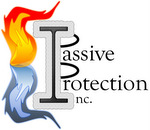Single-family and Multifamily Home Fire Safety
When homeowners and developers are designing a residential layout, the typical goals are functionality, aesthetics, and comfort – home fire safety is not always at the top of the list. Once you start considering exit accessibility, the location of every piece of furniture, and their impact on fire behavior, you might realize your home could be very difficult to navigate in case of an emergency.
Every year (for the past several decades, in fact) fire is the leading cause of property damage worldwide, with injuries and deaths in the 10,000’s. One way to offset these risks is to minimize the fuels available to a fire once it begins. Underwriters Laboratories conducted a test comparing “legacy” furnishings versus “modern” furnishings. (Click for video, or full report) The results were astonishing:
- Legacy room – almost 30 minutes to reach flashover.
- Modern room – less than 4 minutes to reach flashover.
Based on these results, this means there are less then 4 hectic minutes available for your family to escape and first-responders to arrive before a misplaced candle becomes a catastrophic disaster. Much of this decreased resistance to fire is due to a shift in the materials used in making furnishings and decorations – from natural-fiber fabrics to synthetics, hardwood to softwood frames, natural fills to foam fills, and nails to glue.
Flame retardants are designed to retard flame propagation – slowing the time for the fire to spread across a single piece of furniture AND slowing the spread to another piece of furniture, wall, or window treatment. This delay affords valuable time for family members to escape – allowing firefighters to respond and effectively extinguish a fire before more damage is incurred. In some cases, these products can actually stop or cause a fire to self-extinguish once it starts
Page Jumps:
Smoke not Fire
Home fire safety should not be solely focused on the fire itself. In most cases, civilian and firefighter injuries or fatalities are caused by smoke inhalation. The shift to synthetic materials, as mentioned above, has increased the amount of toxic gases released during the combustion process. Smoldering fires with heavy volumes of smoke and gases are as dangerous as a blazing fire, especially since the unseen dangers of toxic gases are not as obvious as bright flames pouring out of a building’s windows.
With historical flame retardants, the toxic gases released by burning items were compounded by the smoke and gases released by the flame retardant products themselves. Therefore, Passive Protection only uses products that are evaluated for both fire and smoke retardant properties. All products are non-toxic at all stages of application and when exposed to fire in case of an emergency.
Passive Protection installations work in two ways:
- Slowing the spread of fire, while…
- Mitigating toxic gases released in the combustion process
Unknown chemicals to prevent a wine stain, but not a fire?
The international community has long argued the balance of home fire safety versus health risks and environmental impacts of flame retardants. When considering a product for use in the home, one should not be forced to balance health risk for safety.
There is an ongoing worldwide shift from products containing unrecognizable ingredients to brands containing natural and safe components. For decades, homeowners have quickly purchased stain prevention treatments with their furniture, used fabric wrinkle-remover and cleaning agents on drapes and curtains. Many of these products contain known toxic, carcinogenic, or environmentally damaging compounds; yet a common resistance to using flame retardants is the potential hazards of introducing these chemicals into the home.
The good news is that homeowners do not need to relinquish one benefit to gain another. Please read our page on non-toxic flame retardants for more detailed information about the products we use. These products are safe for use in any area of the home – from the kitchens where we prepare our food to the bedrooms and nurseries where our children sleep.
A simple step to a simple solution
CODEpliance offers flame retardant products and services to a wide customer base – industrial, commercial and residential property management and homeowners. For a family interested in improving home fire safety, our services offers a level of fire prevention to high-risk furnishings (window treatments, furniture upholstery, decorations and bedding) with NO harmful health or environmental effects. We are committed to investigating new developments in global fireproofing research; as these technologies become commercially available, we will continue to make them available to our customers.
Contact us for an estimate of on-site treatment. We will provide you with a firm proposal for treating potentially hazardous areas in your home, and perform the treatment for you quickly and effectively, and deliver formal certification that the job was done correctly. Our maintenance services are also available to you for future cleaning and reapplication to ensure the longevity and beauty of your home decor and continued flame retardant effectiveness.
Flame Retardant Application Table
| Where | When | What | Who |
|---|---|---|---|
| Living Areas | Current residence | Upholstery | Resident |
| Bedrooms | Move-in | Window Treatments | Interior Designer - Furnishings |
| Baby Nursery | Renovations | Decorative Wall-coverings | Interior Decorator |
| Kitchen | Additions | Exposed Wood Beams | Property Manager |
| Means of egress | Vacation property | Attic rafters and roof | Developer |
| Workshop | Rental property | Basement joists and floor | General Contractors |
| Garage | Second home | Architectural & Design Firms | |
| Shed | |||
| Utility rooms | |||
| Basements | |||
| Attics |
Passive Protection, Inc. Services
| Applicable Services |
|---|
| Compliance Program |
| Flame Retardants |
| Fireproofing Application |
| Flame Certificates |
| Specialized Maintenance |
| Recertification |

